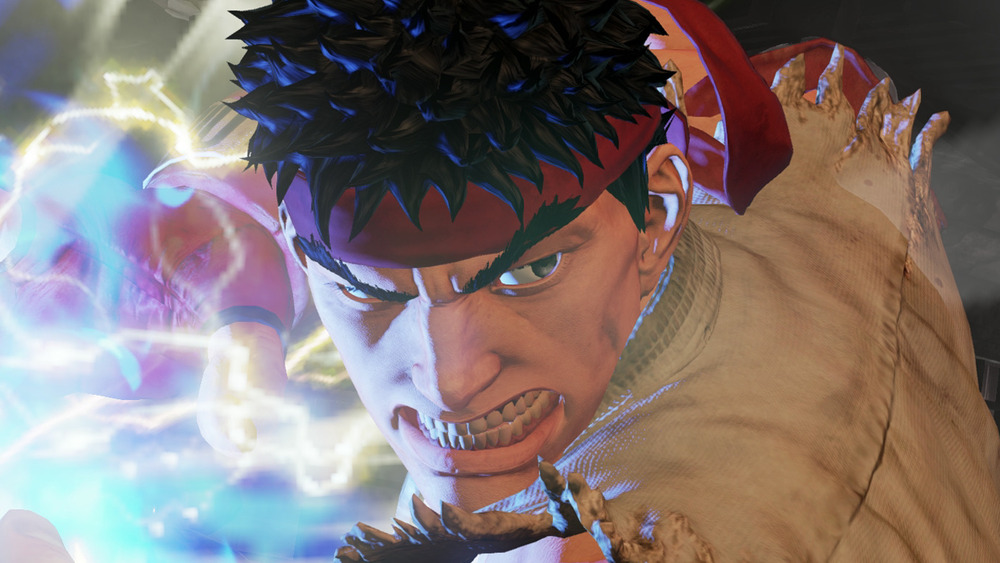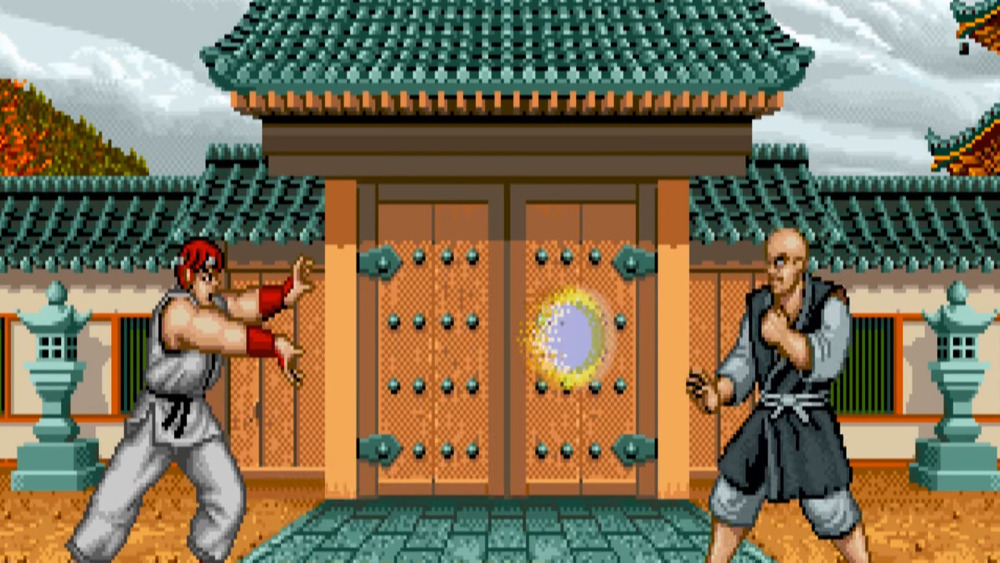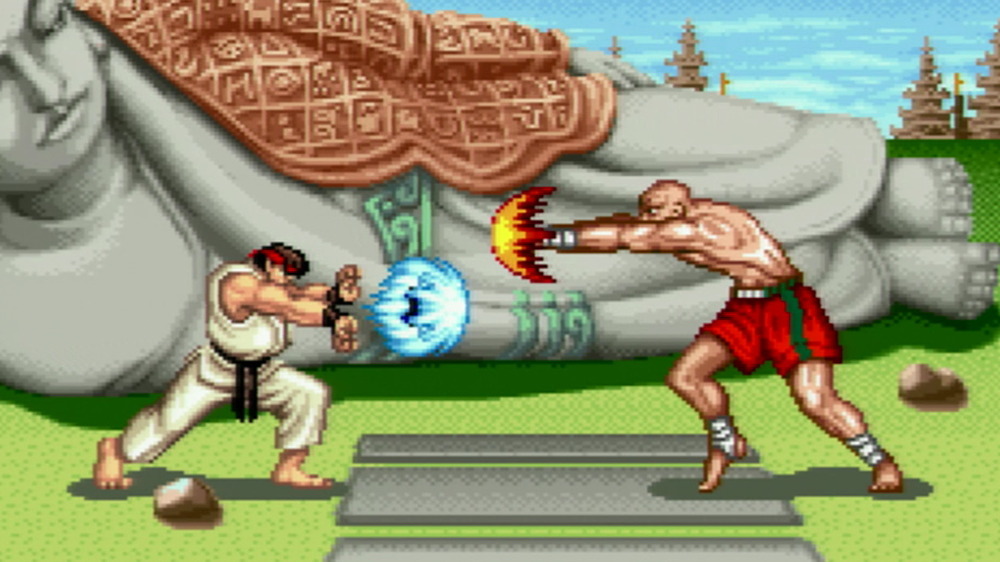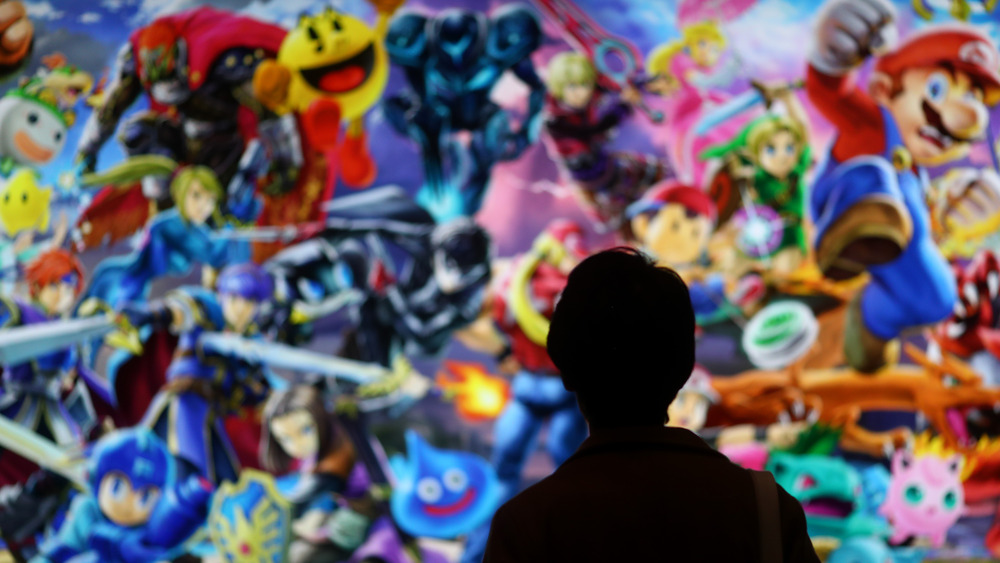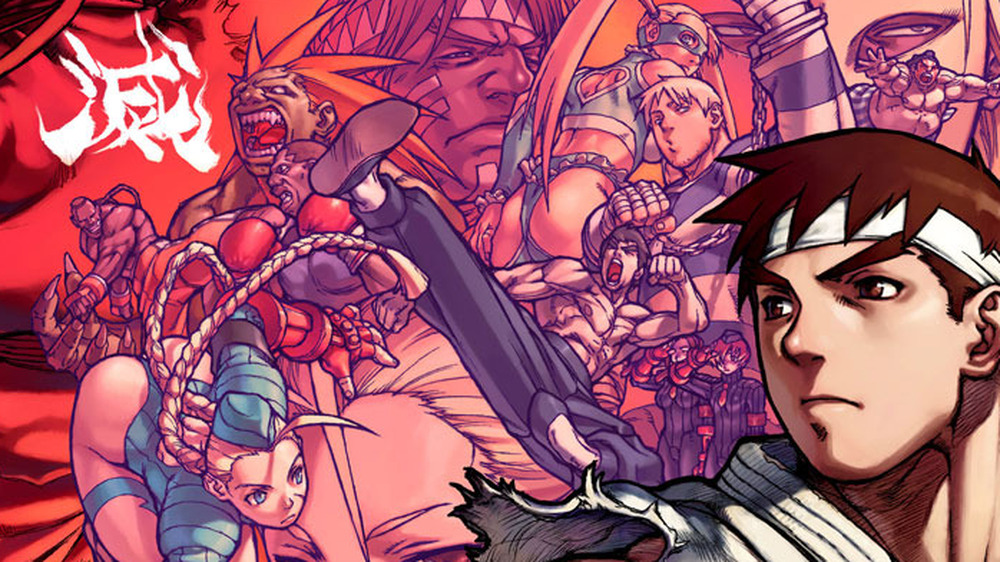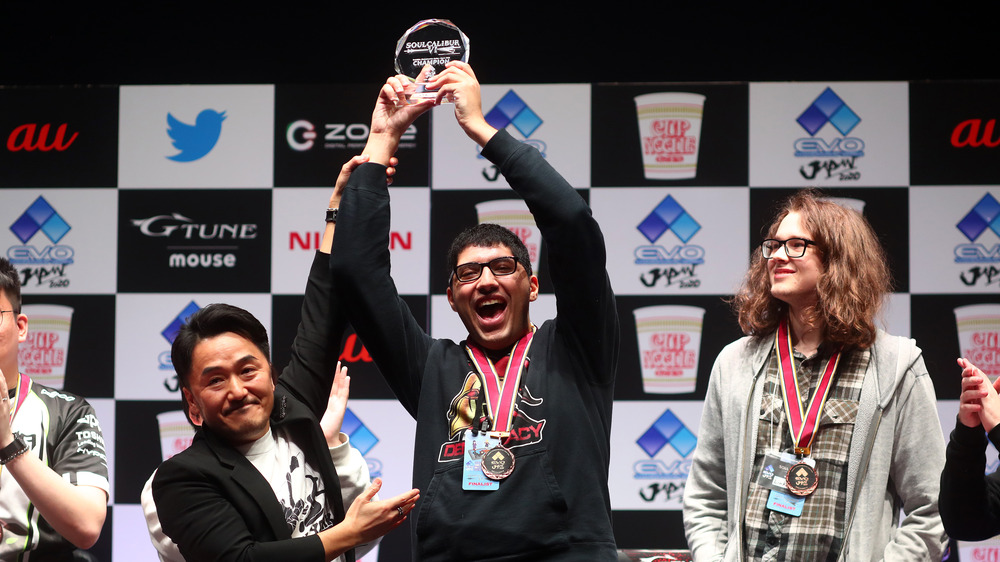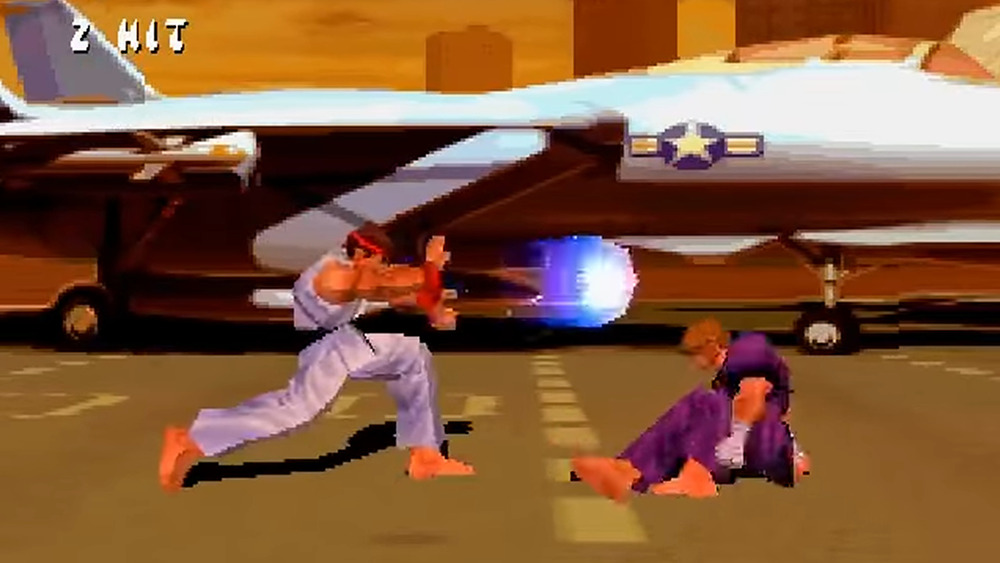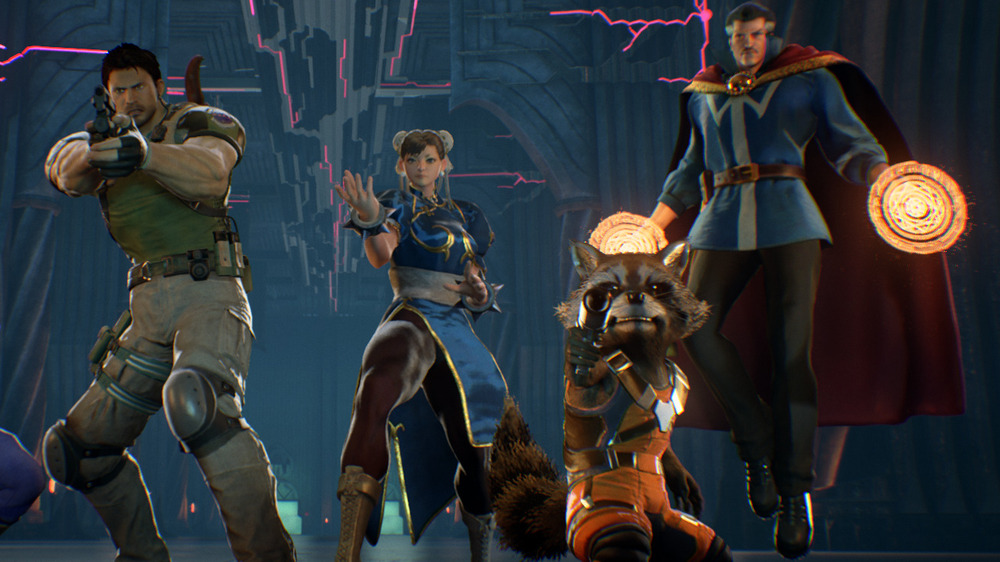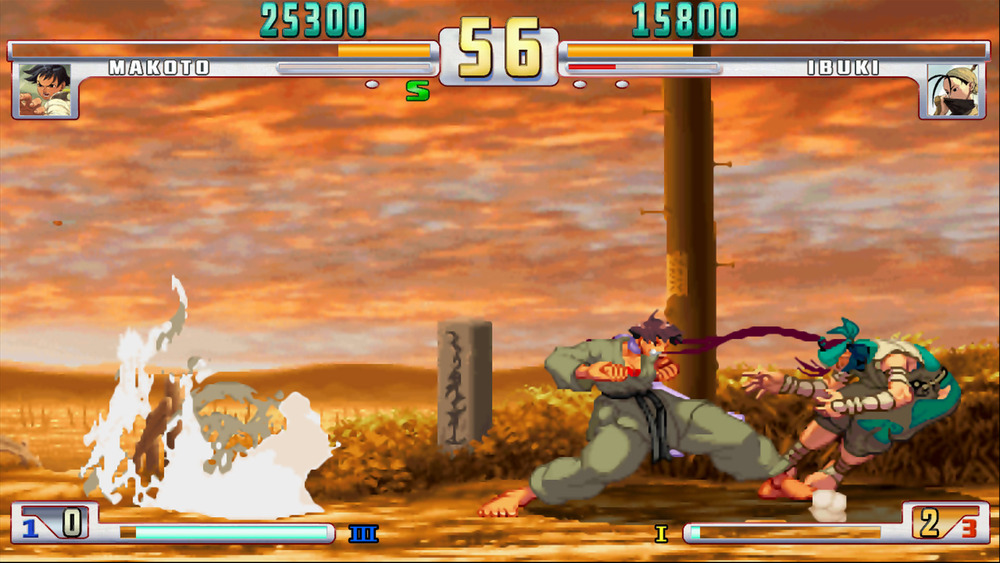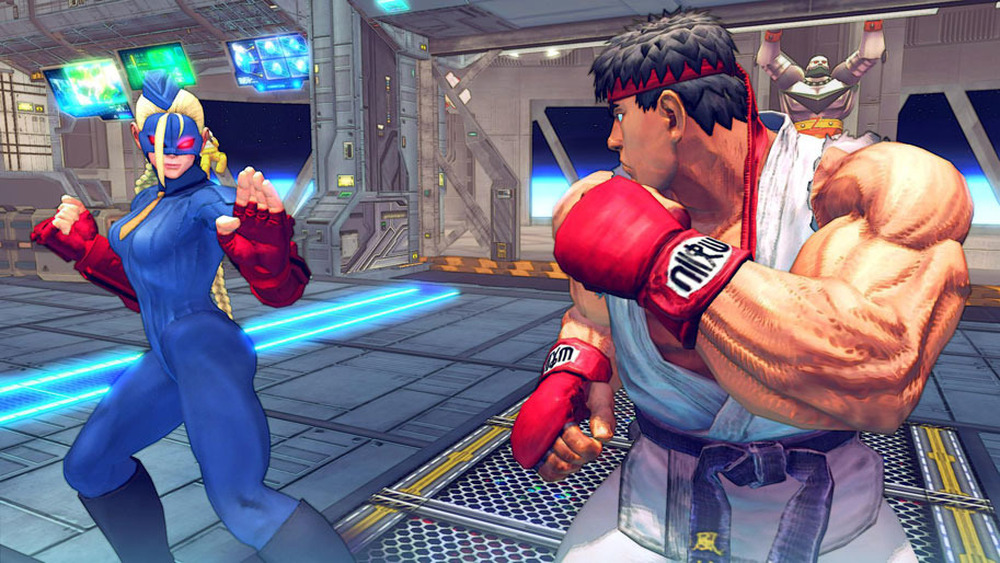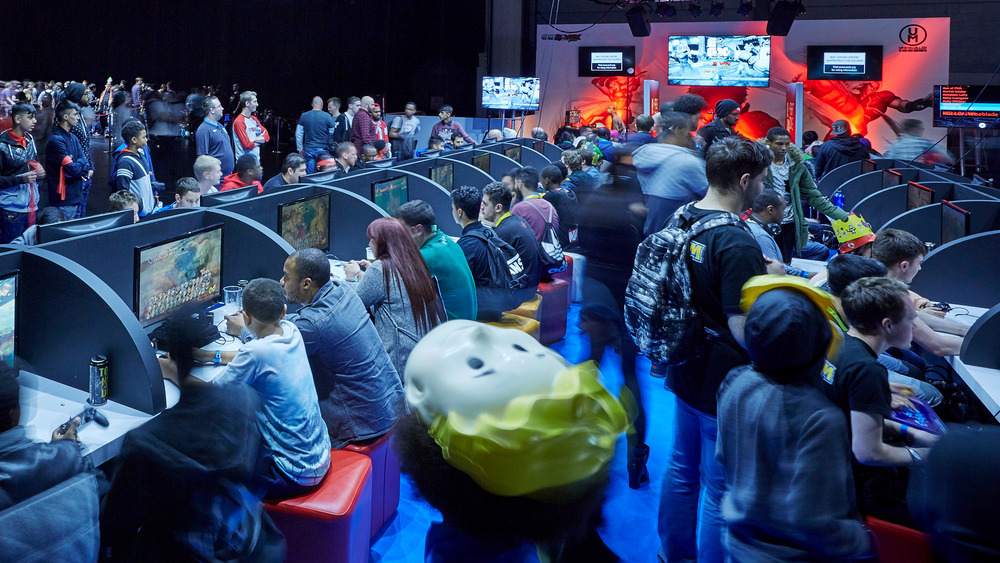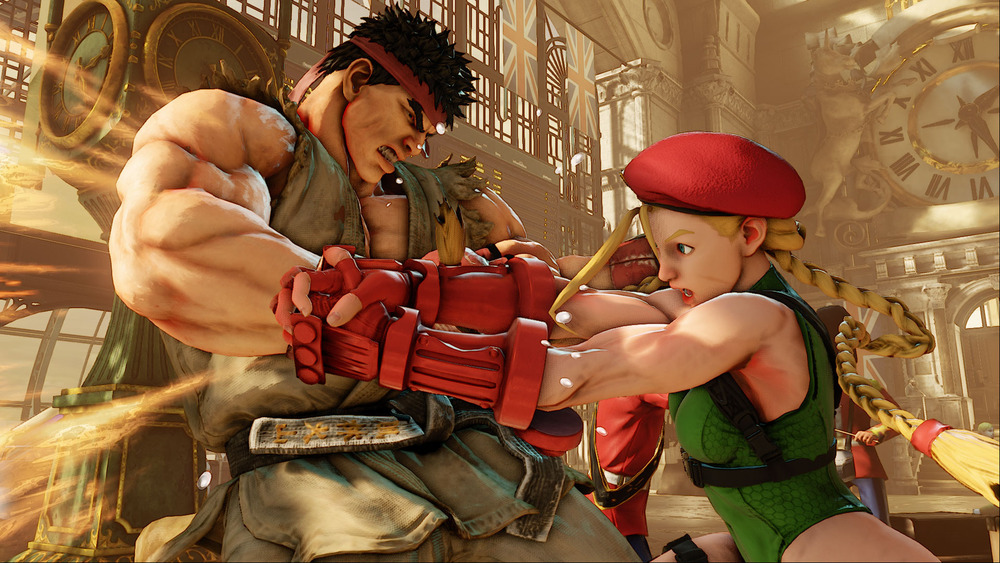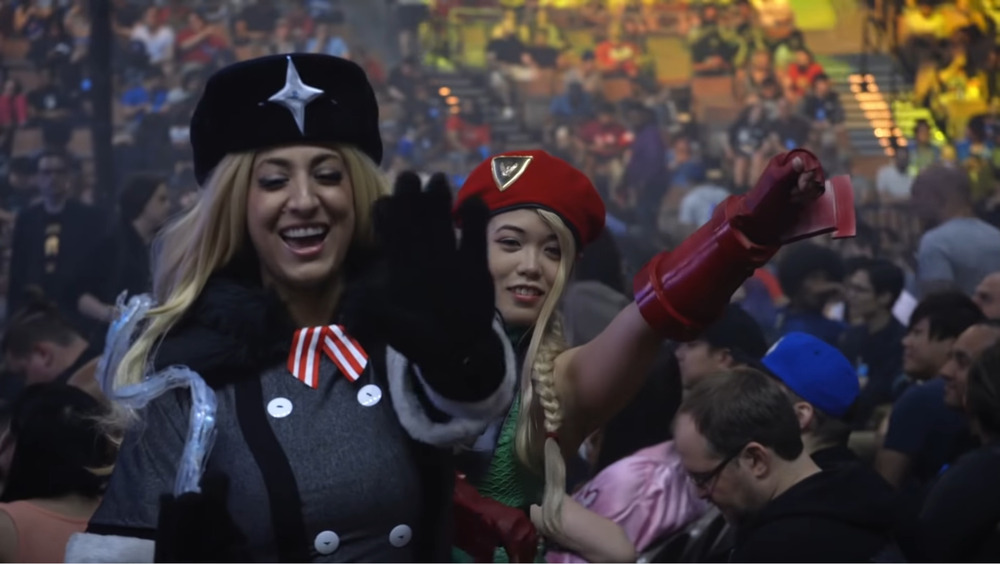The Stunning Transformation Of Street Fighter
Street Fighter awakened a newfound fascination with versus fighters — competing against actual players instead of an AI. From that moment on, fighting games weren't just kicks and punches anymore. The series introduced features that pioneered the standard for the modern fighting games many still play today. And as the genre grew more complex, players learned to memorize spacing, combos, and tech that could put them one step ahead of their opponents. From the first Street Fighter to the latest, the series continues to influence the greater fighting game community.
Street Fighter built off its successes from past titles and competitors. Every new game — and every remake — brought changes to the meta and added to the series' rich history. Throughout it all, Street Fighter has remained one of the most popular fighting game franchises across the globe. However, not everybody knows how this arcade fighter evolved into such a juggernaut.
Here's how Street Fighter got its start, how it contributed to the rise of fighting game communities, and where it stands in the scene now.
Street Fighter (1987)
Ryu and Ken were the only two playable characters in the first Street Fighter. Ryu, the protagonist of the series, was the default choice. If a second player joined, then they would play Ken, Ryu's best friend and rival. As far as narrarive goes, Sagat, the main villain and Muay Thai king, kicks off the entire Street Fighter story with the first World Warrior tournament. Ryu eventually defeats Adon, Sagat's apprentice, and then Sagat himself. Sagat's defeat factors into the lore for the entire series even years later.
Street Fighter introduced special moves and varying attack strengths to the fighting game genre. The original game included three specials: Fireballs, Dragon Punches, and Hurricane Kicks. Attack strengths — light, medium, and heavy — dealt more damage depending on player input via pressure-sensitive buttons or, later, through separately mapped buttons for each attack. Nowadays, fighting game community members throw around terms like fireball and DP to refer to projectiles and super moves like Dragon Punch, even for games outside the series.
Street Fighter's first game laid the foundation for its best-selling sequel, though it wasn't as popular. The game later released on TurboGrafx-CD/PC-Engine CDs with the name Fighting Street.
Street Fighter 2 (1991)
Street Fighter 2 skyrocketed the series into an international success. In addition to improving mechanics from the original game, SF2 expanded the cast to eight playable characters. These characters catered to a variety of players with their drastically different designs. Chun-Li, supposedly the strongest woman in the world, could be on one side of the stage while Blanka, a green-skinned jungle man, could be on the other.
SF2 picks up where the first game left off. A new villain called M. Bison creates a new World Warrior tournament to brainwash the best into working for his organization, Shadaloo. Sagat returns as M. Bison's lackey, now scarred after Ryu defeated him with a cutting Dragon Punch in the previous game.
Capcom updated the release with later versions like Street Fighter 2 – Champion Edition, Street Fighter 2 Turbo, and Super Street Fighter 2: The New Challengers. For example, SF2 Turbo added the Super Combo Gauge as a new mechanic for unleashing a character's most powerful moves. SF2 eventually received ports for the Nintendo Super Entertainment System and Sega Genesis, though it remained an arcade phenomenon.
The fighting game community (FGC)
The fighting game community, or FGC, emerged in the early 1990s along with arcade fighters like Street Fighter and Mortal Kombat. Sheer interest boosted the number of competitors, but so did the ubiquity of Street Fighter 2 arcade cabinets in gathering places like pizza parlors, bowling alleys, and laundromats.
James Goddard, director for the fighting game Killer Instinct, recalled playing SF2 with a friend at Golfland in Sunnyvale, Calif. "We walk-in and there is a crowd around Street Fighter II, we had to wait 20 minutes to get to play," Goddard told Gamasutra. "We stayed for hours until I had no money left."
Street Fighter fans could easily find others to play with at the local arcades for an impromptu match. John "Choiboy" Choi, a veteran competitor, mentions the growing '90s California FGC in an interview with US Gamer. "I settled here because it had the best competition," he said. "After a while tournaments became popular at arcades, there was a period of time when I competed in 3 tournaments a week."
Nowadays, the FGC collectively refers to those who competitively play fighting games like Street Fighter, Mortal Kombat, and Super Smash Bros.
Street Fighter Alpha (1995)
Street Fighter Alpha changed to an anime-inspired art style that matched the animated Street Fighter movie and TV show released near the same time. The game brought back characters from the original Street Fighter and Final Fight, a Street Fighter spinoff series.
New mechanics like Alpha Counters, which blocked the opponent's attack and followed up with a counter, defined the game. The Super Gauge, a returning mechanic from Street Fighter 2 Turbo, enabled players to use Alpha Counters and increase attack power. More mechanics like blocking in mid-air also appeared for the first time. According to FGC commentator James "Jchensor" Chen, chaining combos became easier than planning one attack after another in succession. Instead of learning how to cancel special moves, players could just learn specific sequences for combos.
SF Alpha follows the events of the original game. However, Street Fighter Alpha 2 overwrites it and continues the plot with Street Fighter Alpha 3. Ryu returns to Japan to find that his mentor, Gouken, was killed and embarks on a journey to find his murderer. Akuma, who only previously appeared as a hidden character, reveals himself as Gouken's brother and killer who fights using Satsui no Hado, an elusive dark art that corrupts the user in exchange for power.
Battle by the Bay/Evo
It wasn't long before the Street Fighter fighting game community was flourishing. This led a few passionate people to found the Evolution Championship Series — or, as it was known at the time, the Battle by the Bay. The name referred to the San Francisco Bay Area, where the competition started. Battle by the Bay officially rebranded as Evo in 2002.
The original tournament only included Street Fighter, but over time, the competition opened up to include games from other series such as SoulCalibur, Tekken, and Super Smash Bros. Evo later expanded to Japan in 2016 with a spinoff tournament called, quite appropriately, Evo Japan. Evo is now considered to be one of the most prestigious fighting game tournaments in existence. Winning an Evo competition is one of the highest honors for a professional player.
In March 2021, Sony announced that it was acquiring Evo, sparking the concern of the FGC. However, Evo, Sony, and Nintendo released statements expressing their openness to discussing the current state of the tournament. The Evo 2021 competition — set to take place online in August 2021 — will include Mortal Kombat 11: Ultimate, Street Fighter 5: Champion Edition, Tekken 7, and Guilty Gear Strive.
Street Fighter EX (1996)
Street Fighter EX, a spinoff series developed by Arika, was the first 3D Street Fighter game. YouTuber Top Hat Gaming Man pooled together a collection of Twitter responses that generally agreed on a few points; namely, SF EX graphics and gameplay were bulky and uninspired compared to its competitors and other Street Fighter games released around the same time period.
Some fans think that Capcom just released the game to compete with other 3D fighters like Tekken 3 and Virtua Fighter. Noritaka Funamizu, a general producer for Street Fighter 3, reportedly said that the company felt 3D wasn't suitable for head-to-head fighting. As such, Street Fighter mostly remained a 2D series until Street Fighter 4.
Though it wasn't that popular, SF EX still received sequels like Street Fighter EX2, Street Fighter EX3, and Street Fighter EX Plus Alpha. SF EX Plus Alpha especially improved graphics and gameplay — enough to earn positive reviews from reputable outlets like GameSpot.
Crossover series
Capcom has history with Marvel. Before the Capcom vs. Marvel series, they collaborated on an arcade game called The Punisher, starring the Marvel antihero of the same name and S.H.I.E.L.D. agent Nick Fury. This popular beat 'em up arcade game set the foundation for the two companies to publish even more Capcom games featuring Marvel characters.
The first crossover game, X-Men vs. Street Fighter, released before Street Fighter 3. Street Fighter later crossed over with other franchises like SNK, Tekken, and Mega Man. Ultimate Marvel vs. Capcom 3 and Street Fighter X Tekken even captured enough attention to have their own brackets in the first Capcom Cup.
Street Fighter characters have also appeared in various other games as cameos. For example, Ryu and Ken are unlockable characters in Super Smash Bros. Ultimate. Ryu even appeared in its predecessor, Super Smash Bros. for Nintendo 3DS and Wii U. Outside the genre, Ryu and Chun-Li appeared in Fortnite as limited-edition skins.
Street Fighter 3 (1997)
SF3 tossed most of the Street Fighter 2 cast in favor of a new roster led by Alex, an orphan from New York trained in wrestling and mixed martial arts. Gill replaced M. Bison as the game's antagonist. This time, Gill initiated another World Warrior tournament to recruit the best fighters into helping him create a world utopia.
Street Fighter 3's parry mechanic drastically changed gameplay. "Every button you touched carried a new element of risk, and it created a huge opportunity for comebacks from previously impossible situations," Seth Killian, Evo co-founder and former Capcom employee, told Kotaku.
Evo Moment 37, a highlight from Evo 2004, featured this in action. During the Street Fighter 3: 3rd Strike tournament, Daigo Umehara parried Justin Wong's Super with a sliver of health left and clutched the comeback. Street Fighter fans still cite this bout as one of the most memorable matches of all time.
Capcom later adjusted gameplay and shuffled characters for Street Fighter 3: New Generation, Street Fighter 3: 2nd Impact, and Street Fighter 3: 3rd Strike.
Street Fighter 4 (2008)
Street Fighter 4 brought back the original 12 World Warriors and Akuma, and reimagined their move sets with updated mechanics. Focus Attacks, one of the new features, added a comeback factor that old and new players could take advantage of.
SF4 mostly received positive reviews, though the fanbase had some qualms. Some complained that the game forced beginners to master normals and footsies before they could pull off more technically advanced moves. Players supposedly had to finish one attack before they could input a new one to chain into a combo. However, some argued that this design trained beginners to understand proper fighting game form. Eurogamer gushed that SF4 was the "greatest fighting game ever made" and pointed out that the slower pace actually made the gameplay more manageable.
Despite the title, SF4 actually takes place between SF2 and SF3 in the Street Fighter timeline. M. Bison initiates another World Warrior tournament to lure in Ryu so that he can research his dark art, Satsui no Hado, for the BLECE project.
SF 4 had a few re-releases that came out on major consoles, like Super Street Fighter 4 and its arcade edition, as well as Ultra Street Fighter 4.
Capcom Pro Tour
Street Fighter's FGC existed for years before Capcom created its own competition. According to GameSpot, the first Capcom Cup hosted tournaments for three titles: Super Street Fighter 4: Arcade Edition, Ultimate Marvel vs. Capcom 3, and Street Fighter X Tekken. The eight regional qualifiers took place in the United States, United Kingdom, Brazil, Japan, Taiwan, South Korea, Singapore, and Australia.
Ho Kun "Xian" Xian, the Street Fighter 4 Arcade Edition Evo champion, received a direct invite to the event. He faced Sako, who became the first champion in 2013, in the finals. The official rules claim that the most recent winner bypasses the qualifiers for the following year and automatically qualifies for Capcom Cup. However, the 2020 Capcom Cup was canceled in favor of an online season final.
As of 2021, the Capcom Pro Tour features the most recent installment of the main Street Fighter series. The tour holds regional qualifiers across the globe in 19 territories, including the original eight, and culminates with the Capcom Cup, which pits the top players from each qualifier against each other. Because of COVID-19 concerns, Capcom plans to hold the next Capcom Cup in early 2022.
Street Fighter 5 (2016)
Street Fighter 5 had a rocky start, but after a couple of updates and the release of the Arcade Edition, the community accepted it as a decent game. After the initial release, players complained about long queues and a feeling of incompleteness. Capcom improved its servers and polished the gameplay since then, but players still argue about how V-Triggers and other gameplay adjustments seem to reward risky plays over more skillful ones.
In addition to new mechanics, SF5 added a cinematic story mode for the first time in the series. "A Shadow Falls," a free-to-play DLC, follows the events of SF4 and leads into a showdown between Shadaloo and the World Warriors. Character stories also offered backstories for each of the playable characters and explained how they ended up where they were in the context of the DLC.
Street Fighter 5: Champion Edition is the competitive standard as of 2020. According to the 2020 SFV Summer Update, Capcom plans to release even more DLC characters. Season 5 includes Dan, Rose, Oro, and Akira Kazuma from Capcom's Rival School series. One more mystery character will join the roster in Fall 2021.
Street Fighter 30th Anniversary and beyond
Capcom released other Street Fighter collections in the past, but the Street Fighter 30th Anniversary Collection was the most comprehensive. The 30th anniversary collection boasted 12 arcade games in one package: the original Street Fighter, five Street Fighter 2 games, all three Street Fighter Alpha games, and three Street Fighter 3 games. The Switch version upped the number of SF2 games to six. These versions of the games came straight from their original ports. In addition to the games, the collection included an online museum that showcased Street Fighter history, characters, and music.
For Street Fighter's 30th anniversary, Capcom published a three-part documentary about the game's history and retrospective videos for each arcade subseries on its YouTube channel. James "Jchensor" Chen narrated the voiceovers for the videos. Capcom also uploaded 25th anniversary videos in the past, so it might celebrate other milestones in the future, too.

